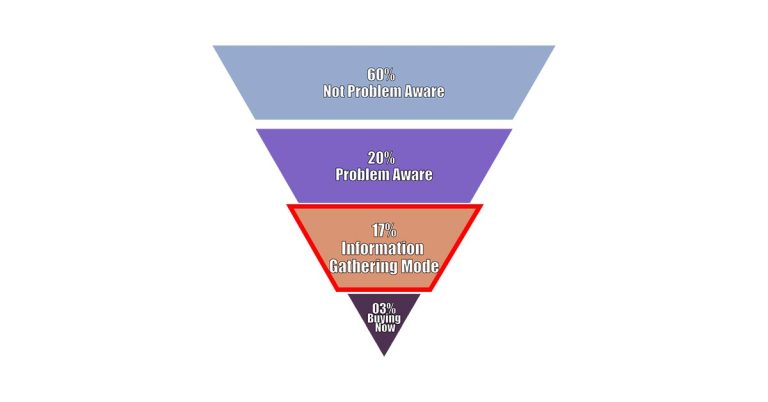Content Marketing in 2025 : The Ultimate Guide
Table of Content
Article Introduction
What is Content Marketing?
The Value of Content Marketing
Types of Content Marketing
How Does Content Marketing Work?
Content Marketing Examples
Content Marketing Strategy
Traits of Effective Content Marketing
Best Content Marketing Resources
Best Content Creators and Specialists to Follow on
Conclusion
Article Introduction
Are you eager to unlock the potential of content marketing to enhance your brand, engage your target audience, and drive conversions? In this comprehensive guide, we’ll explore the world of content marketing from its fundamental concepts to advanced strategies. We’ll equip you with the knowledge and tools you need to excel in the realm of digital marketing.
What is Content Marketing?
At its core, content marketing involves creating and distributing valuable, relevant content to attract and engage a specific audience. Unlike traditional advertising, content marketing focuses on delivering information, entertainment, or solutions rather than directly promoting products or services.
The Value of Content Marketing
You might wonder, “Why invest in content marketing?” Well, it offers several compelling benefits:
Brand Awareness: Effective content marketing helps you get noticed and remembered by your audience.
Conversions: Well-crafted content can lead to increased conversions and sales.
Relationship Building: It allows you to forge meaningful connections with your audience, fostering loyalty and trust.
Types of Content Marketing
Content marketing comes in various forms, each suited to different audience preferences and platforms. Here are some key types to consider:

Social Media Content Marketing: Engage your audience through captivating posts and stories on platforms like Facebook, Instagram, and Twitter.

Infographic Content Marketing: Visualize complex information with compelling infographics, making it easier for your audience to digest.

Blog Content Marketing: Create informative and engaging blog posts to establish your authority and attract organic traffic.

Podcast Content Marketing: Reach your audience through audio content, catering to those who prefer to listen on the go.

Video Content Marketing: Leverage the power of video on platforms like YouTube and Vimeo to captivate your audience visually.

Paid Ad Content Marketing: Invest in paid advertising to target specific demographics and reach potential customers.
How Does Content Marketing Work?
Content marketing aligns with the various stages of a buyer’s journey, as represented by the sales funnel. Let’s explore how it works at each stage:
1. 60% – Not Problem Aware: At this stage, your audience is not yet aware of their problem. Provide clear and informative content to educate them and make them problem-aware.
2. 20% – Problem Aware: For those aware of their problem, offer content that addresses their concerns and provides potential solutions.
3. 17% – Information Gathering Mode: When your audience is actively seeking information, provide detailed content to guide their decision-making process.
4. 03% – Buying Now: For the small percentage ready to make a purchase, deliver compelling content that drives them to take action.
According to the above categories, Create High Valuable Content Offers. So, we highly recommend to read ” The Power of High-Value Content Offers – How To Create A High-Value Content Offer? “. Its perfect to Get clear understand with a examples.
Content Marketing Examples
Explore real-world examples of content marketing in action.
1. Example of Instagram Content Marketing
Researching…
2. Example of Infographic Content Marketing
Researching…
3. Example of Blog Content Marketing
Researching…
4. Example of Podcast Content Marketing
Researching…
5. Example of Video Content Marketing
Researching…
6. Example of Paid Ad Content Marketing
Researching…
7. Example of Twitter Content Marketing
Researching…
8. Example of TikTok Content Marketing
Researching…
9. Example of Viral Content Marketing
Researching…
Content Marketing Strategy
Now that you understand the basics, let’s dive deeper into crafting an effective content marketing strategy:
1. Find Your Target Audience: Identify and understand your audience’s needs and preferences.
Then, answer the following questions about your target audience to help you narrow down the right types of content for them:
- What do they need from you?
- What challenges are they looking to overcome?
- Why do they need your product or service?
- How can you help them succeed?
- Where do they spend their time?
2. Set SMART Goals: Define Specific, Measurable, Achievable, Relevant, and Time-bound objectives.
3. Determine Your KPIs: Choose Key Performance Indicators that align with your SMART goals.

4. Decide on Content Types and Formats: Select the right content formats and styles for your audience.
5. Choose Your Content Channels: Determine where and how you’ll distribute your content.
6. Set a Budget: Allocate resources wisely to achieve your goals.
Then, ask yourself the following questions to figure out your budget:
- Do you need to purchase any software or technology to create the content (such as graphic design software like Adobe Photoshop, a subscription to Canva, a camera to take high-quality photos and videos)?
- Do you need to hire any content creator according to your targeted content. (such as Artists, Writers, Editors, Designers)?
- Do you need to pay for ad space?
- Do you need access to specific tools or resources to enhance or measure your specific type of content?
Make note of how your responses impact your budget — whether that’s an increase or decrease in what you may have already estimated.
7. Create a Content Publishing Schedule: Plan when and how often you’ll release content.
Also, you can Use special tools for schedule your content.
Examples:
Business Suite for Facebook and Instagram Content.
Schedule tool at Pinterest Pin Builder for your Pinterest Pins
8. Create and Distribute Content: Develop high-quality content and share it through your chosen channels.
Create and distribute your content so that your audience members can consume it — and possibly convert.
This step involves more than just creating high-quality content. Keep learning to make your content as useful and engaging as possible. Practice writing headlines, leverage the latest content trends, and develop skills in the media that your audience prefers.
Next, optimize your content to make it easy for your audience to find. SEO is a valuable skill for improving searchability. Additionally, remember that every social media platform is unique, so explore tips for success on platforms such as Instagram, Pinterest, TikTok, and LinkedIn.
Finally, promote your content through email, social media, and other channels. Connect with influencers, affiliates, establish co-marketing partnerships, and run ads to ensure more eyes see your highest-converting content.” Furthermore, Explore the Main Marketing Concepts to brainstorms unique pain points.
9. Analyze and Measure Results: Continuously monitor your performance and adjust your strategy as needed.
Traits of Effective Content Marketing
What separates effective content marketing from the rest? Discover these key traits:
1. Provides Value Beyond Products: Effective content goes beyond sales pitches, delivering genuine value to the audience.
2. Targets Specific Buying Stages: Tailor your content to align with where your audience is in their decision-making process.
3. Timely and Engaging: Keep your content fresh and engaging to maintain audience interest.
Best Content Marketing Resources
To deepen your understanding and stay up-to-date, explore some of the best content marketing resources available.
Best Content Creators and Specialists to Follow on
Researching…
Conclusion
With the knowledge gained from this guide, you're equipped to embark on a successful content marketing journey. Remember, content marketing is a dynamic field, so stay curious, adapt, and continue delivering value to your audience. Your brand's growth and success await through the power of effective content marketing strategies.








